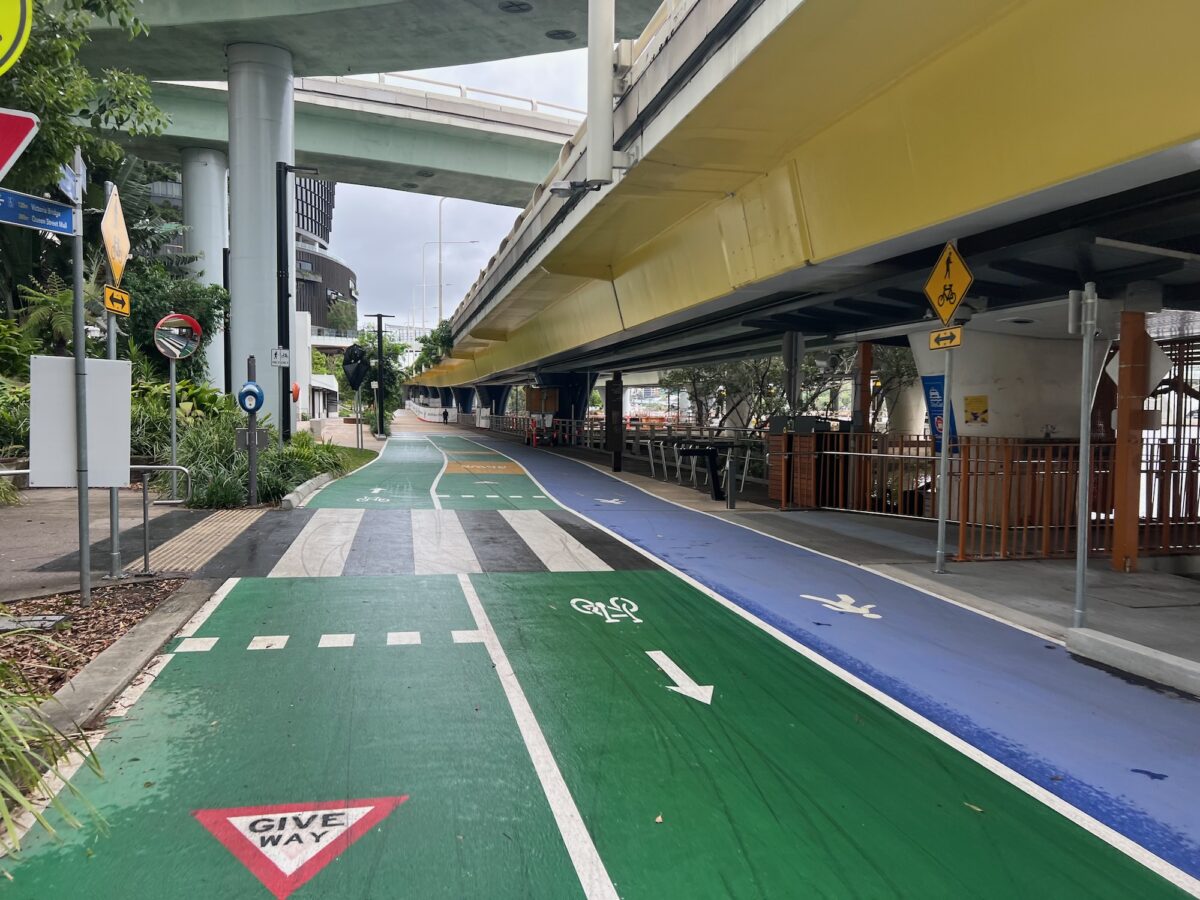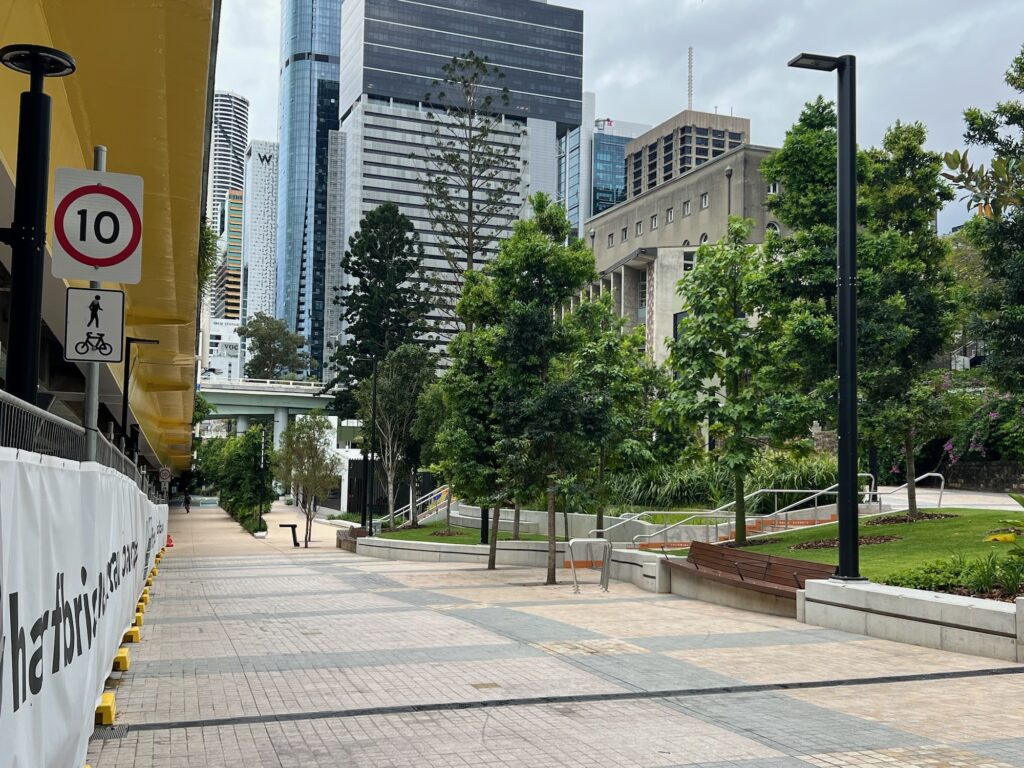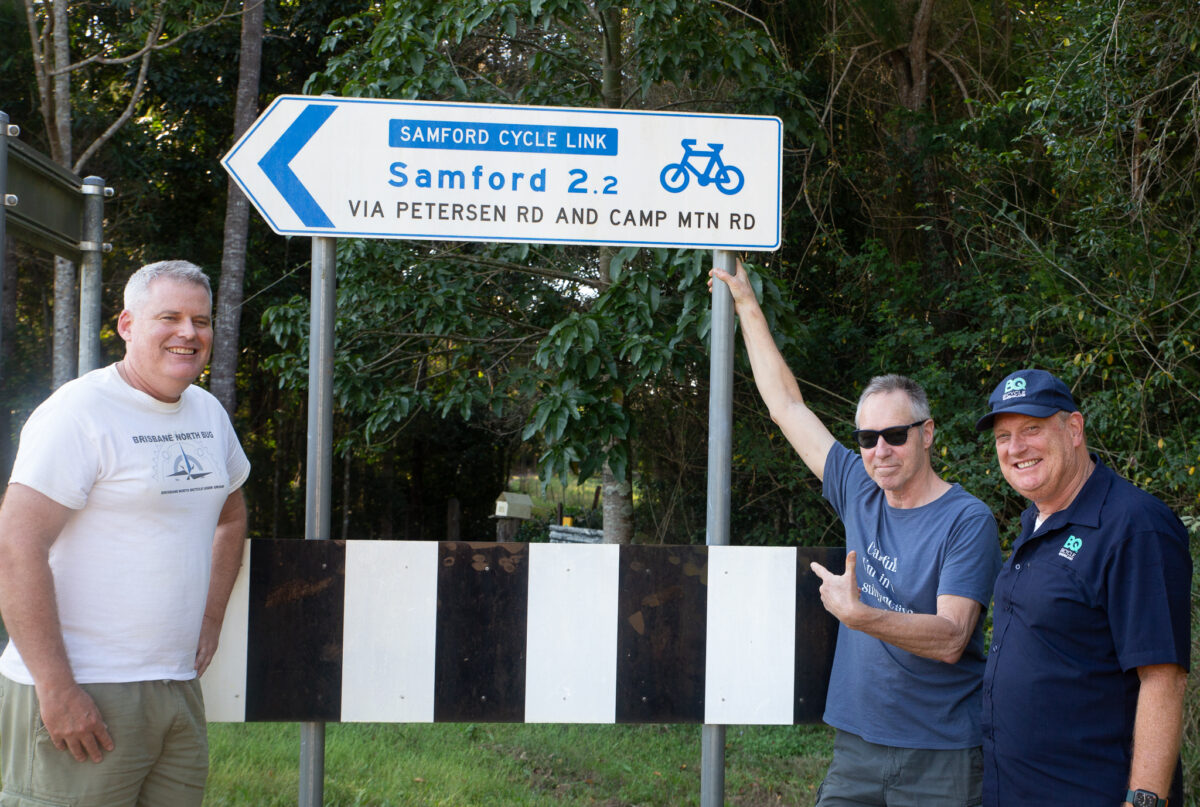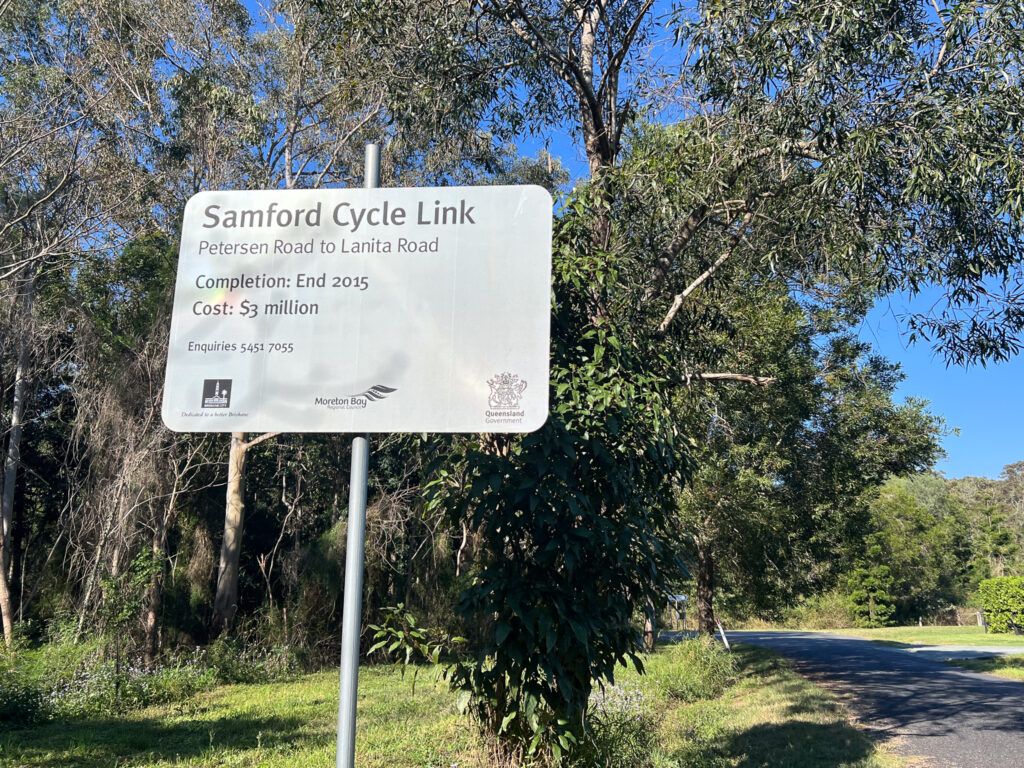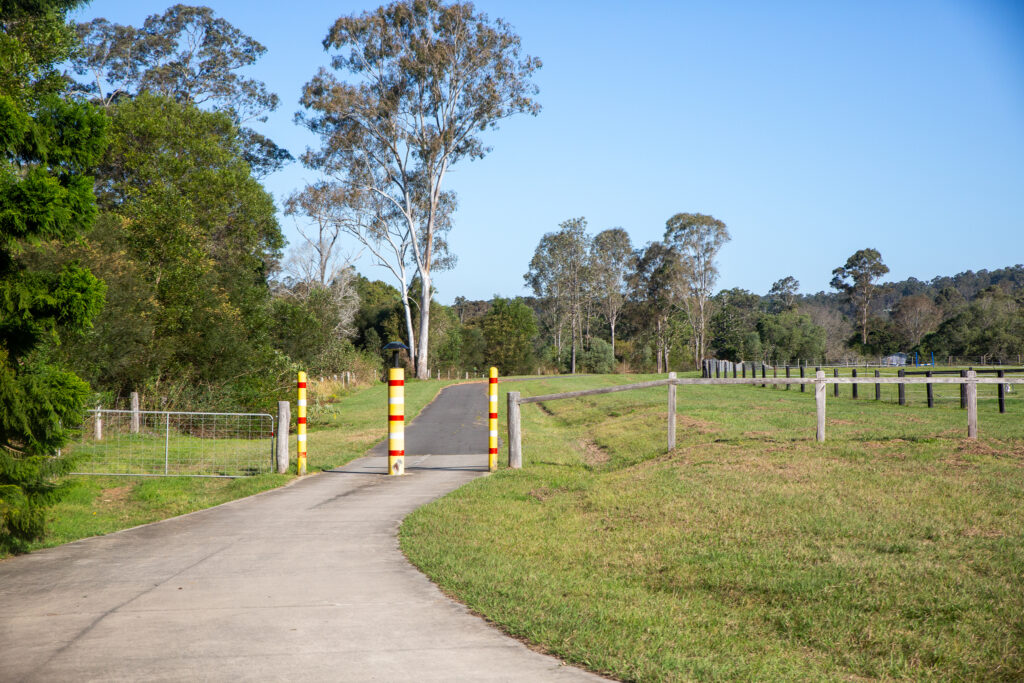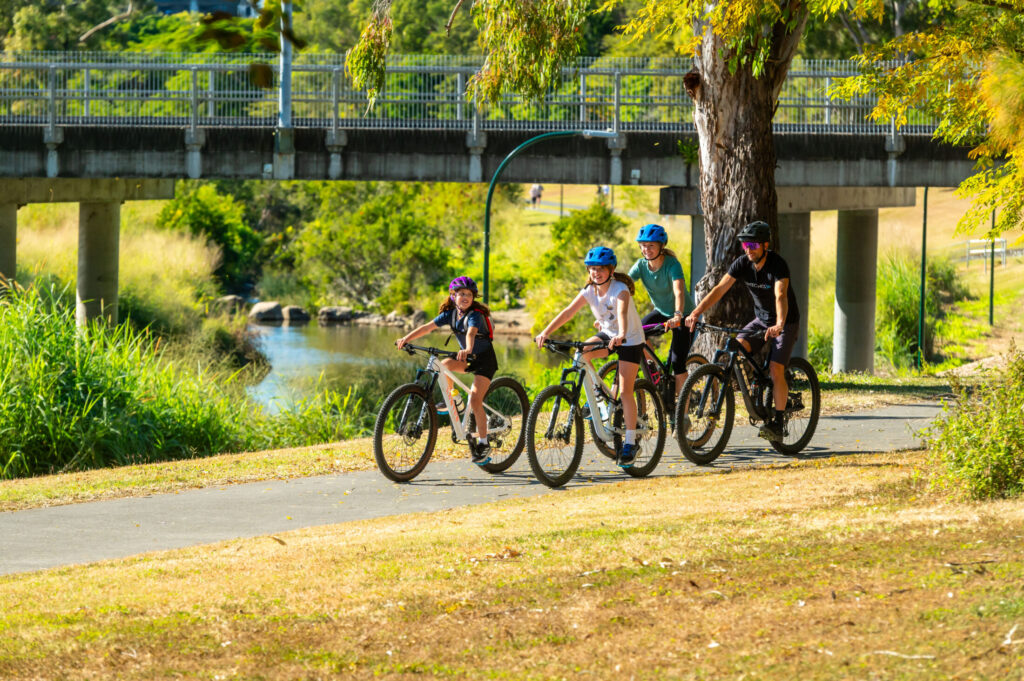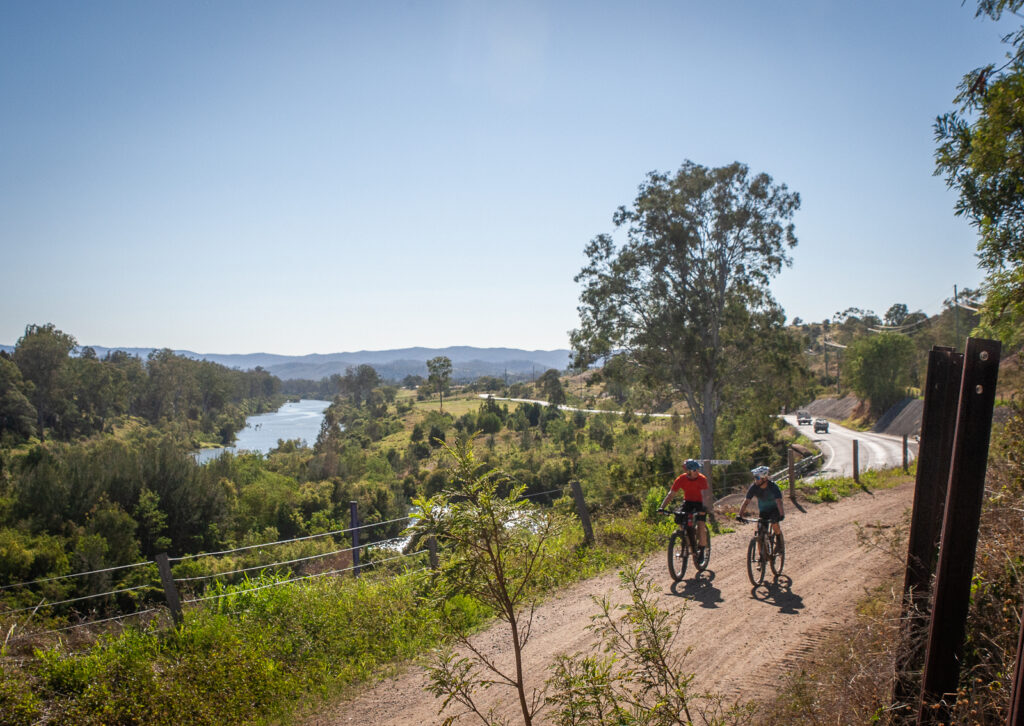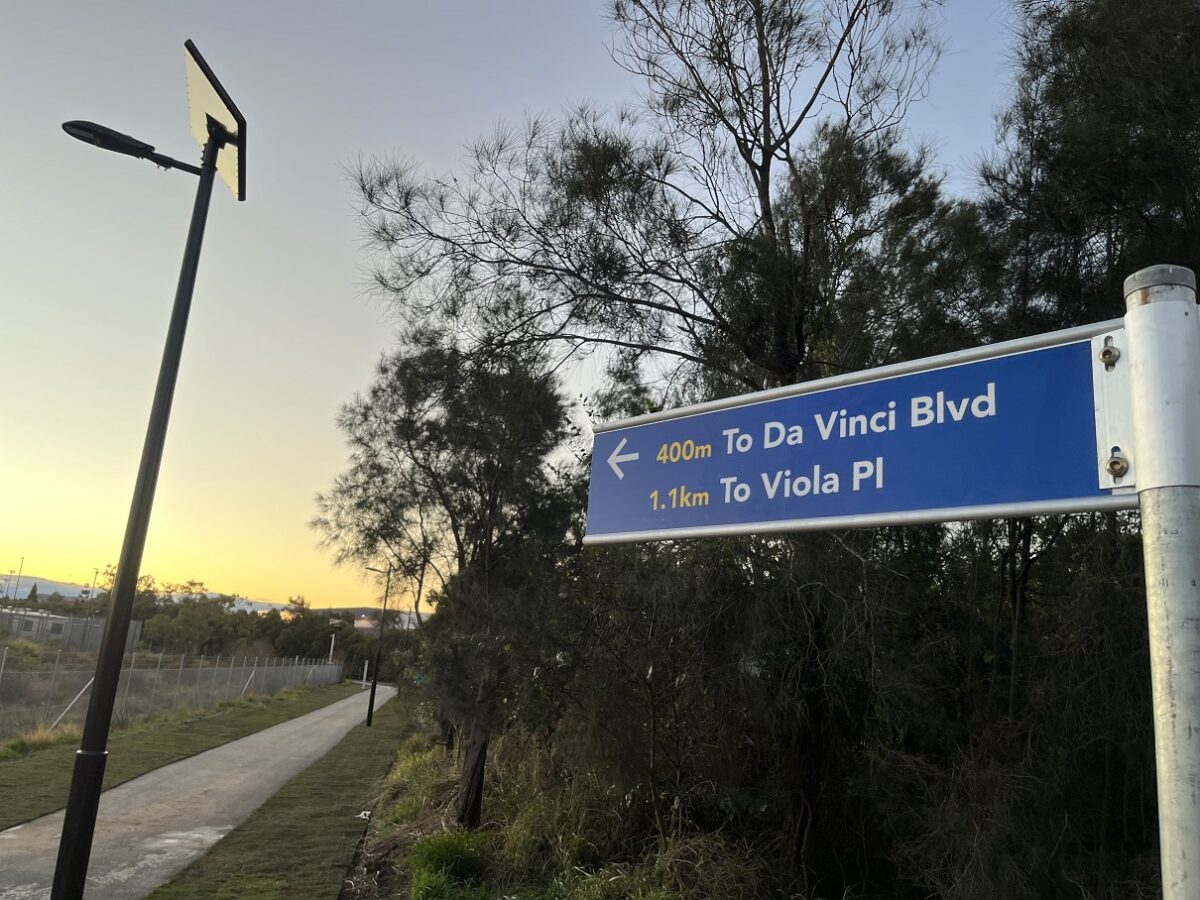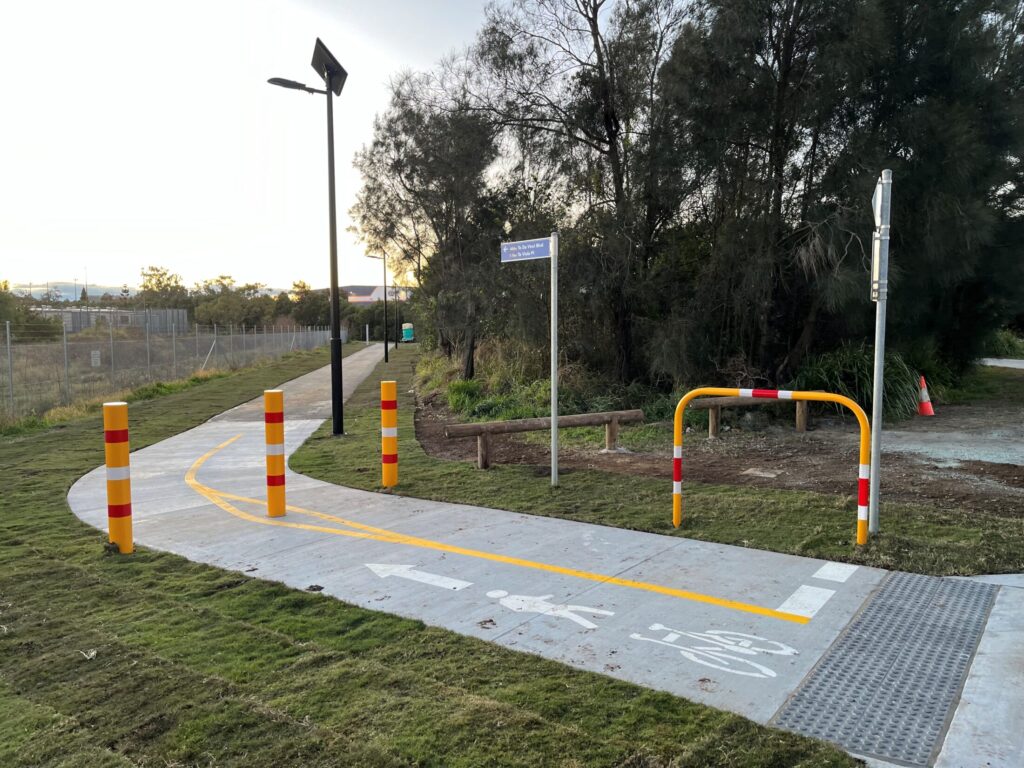When ex-Tropical Cyclone Alfred passed through Brisbane in March, it left more than just downed trees and sodden streets in its wake. For thousands of people who walk, ride or scoot to get around, it severed a critical link across the river.
Both shared paths on the iconic Story Bridge were closed following damage inspections. Three months on, they remain shut—and the timeline for reopening them has not been made public. The repairs, it seems, will take much longer than anticipated.
But for locals who rely on active transport, life hasn’t paused. While there is a suggested detour, it takes longer and leads users through areas that many deem unsafe to use. And this has meant some people abandon active transport and resort to single passenger journeys in a car instead.
But Kathryn Good’s new “bike bus” is looking to provide a temporary solution.
“A a bike bus is basically kind of like a normal bus,” Kathryn explains. “It has a pickup point and a drop-off point, and everyone travels together. But on a bike bus, everybody is cycling. They’re on their bikes instead of being on a physical bus, so it’s about visibility and safety of people cycling together in a group. You know, there’s a lead and a tail rider and everyone rides together, and everyone’s heading to the same destination, just like a bus.”
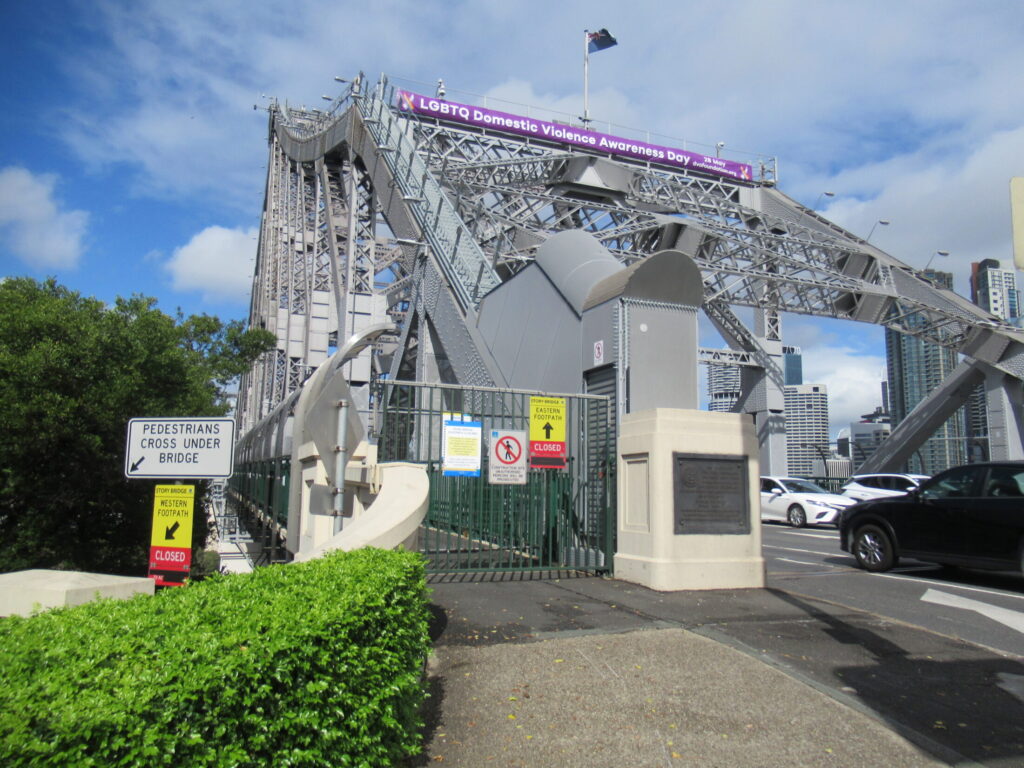
Kathryn’s initiative grew from frustration and a strong sense of community responsibility. In April, she helped organise a group ride to raise awareness of the continuing Story Bridge path closures.
“We did a group ride previously in April to bring awareness to the issue,” she says. “Obviously the footpaths are still closed. There’s still no end in sight, and people still need to get across safely.”
Riding alone across the bridge’s traffic lanes is legal, but daunting.
“It’s a pretty scary thing to ride across by yourself,” Kathryn says. “There’s heavy traffic. The lanes are pretty narrow. It’s definitely not something a lot of people feel comfortable doing by themselves.”
The bike bus offers safety in numbers—and sends a clear message to Brisbane City Council that a proper solution for riders and walkers is still urgently needed.
“Hopefully this is a way to get at least a few people over the bridge safely, doing it together. And yeah, bring visibility as well to the fact that the footpaths are still closed and there’s still no end in sight.”
The bike bus is launching next week with an 8:00 AM departure heading north over the bridge toward Fortitude Valley. The first week is a pilot program, shaped by community feedback.
“We probably will informally ride back over the bridge if there’s anyone that wants to head back the other way,” Kathryn explains. “But yeah, the first week is kind of a trial. We want to hear feedback about whether people would prefer earlier, later, or an evening ride, what time would actually be useful.”
Volunteers are vital, but finite. Kathryn is hoping to strike a balance between availability and demand.
“Volunteer availability is the limiting factor at the moment. So if we can try and have it at a time that’s useful to the most people—and have a bigger group, more visibility, more safety—that’s the goal.”
Early community response has been strong.
“Some people have just been choosing to ride across the bridge regardless, in the car lanes, which is a pretty scary thing to do by yourself,” she says. “It’s great that we’re getting some of those people who hopefully either have tried it and not felt comfortable, or people who haven’t felt comfortable doing it alone – hopefully now they will.”
But while the bike bus offers a solution for people on bikes, it leaves others behind—especially those on foot, scooters, wheelchairs or pushing prams.
“Obviously, the solution that we are actually hoping for in the long term, because it seems that the footpath closures are going to be long term, is that Brisbane City Council do something like they did on Coronation Drive in 2022,” Kathryn says.
She’s referring to an incident in which Council temporarily blocked off a lane of traffic with plastic barriers to give people walking and riding a safe corridor, when the Bicentennial Bikeway was closed due to flood damage.
“If they would block off a lane of the bridge, then people could walk, ride, scoot, or take prams or wheelchairs – anytime of the day.”
Kathryn is quick to note that while cycling across the bridge is still legal, walking and scooting are not possible.
“So it’s helping cyclists, but ideally we would have a lane of the bridge open for everyone to get across. That would be the best solution while the footpaths are being repaired in the very long term.”
While a formal petition to Brisbane City Council closes today, Kathryn encourages everyone affected to keep the pressure on.
“The most effective thing we can do is to get in contact with the Council and ask them for this lane to get across,” she says. “Just calling or writing to the Council and asking them to put barriers up – to put a lane on the bridge- then everyone can get across safely. That needs to happen.”
Bicycle Queensland supports Kathryn’s initiative as a creative and caring workaround, but agrees it is not a substitute for action from Brisbane City Council. The Story Bridge is a critical piece of the city’s active transport network, and a safer solution for all users needs to be developed.
You can follow the Bike Bus Facebook page for updates on the schedule – or get in touch via Facebook or the email address below if you would like to volunteer:
https://www.facebook.com/storybridgeactivetravellalliance
storybridgeactivetravel@gmail.com
Photo thanks to Space4CyclingBNE



